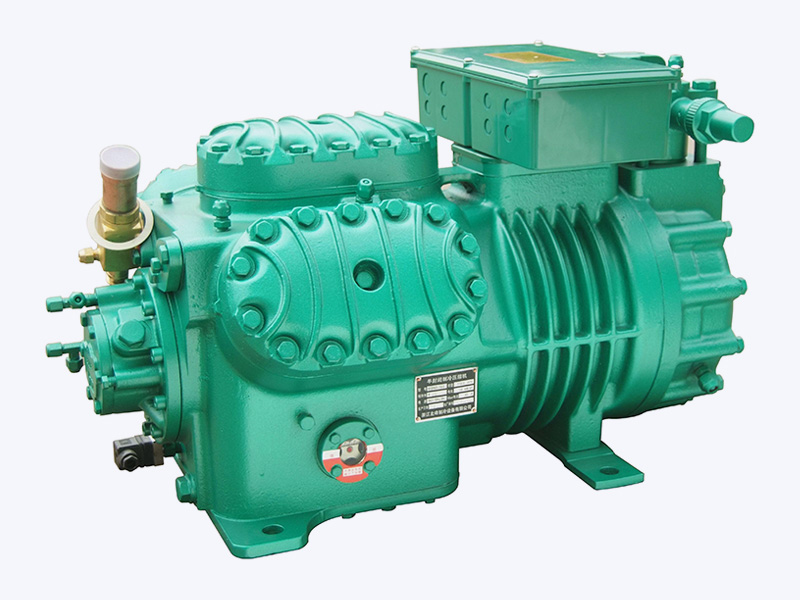Check the Pressure Gauges: Begin your troubleshooting by accurately measuring the refrigerant pressure using high- and low-pressure gauges. Confirm that the gauges are calibrated and functioning correctly. If the readings are significantly lower than expected, it may indicate low refrigerant levels, system leaks, or other performance issues.
Inspect for Leaks: Leaks are one of the most common causes of low refrigerant pressure in a semi-hermetic system. Conduct a systematic inspection for any signs of refrigerant leakage. Look for oil residue around fittings, joints, and the compressor itself; refrigerants typically carry oil, which can highlight the leak's location. Utilize electronic refrigerant leak detectors for more precise identification or apply a soap solution to potential leak points. Bubbles will form at leak sites. Once leaks are identified, prioritize repairs or replacements of affected components. Remember to reclaim any refrigerant before repairs, ensuring compliance with environmental regulations.
Examine the Refrigerant Lines: Thoroughly inspect all refrigerant lines for damage, kinks, or improper insulation. Any physical deformities can lead to restricted refrigerant flow, contributing to pressure drops. Ensure that lines are securely mounted and not subject to excessive vibration, which can cause wear over time. Check for thermal insulation integrity; damaged insulation can lead to energy loss and potential freezing issues. Pay special attention to areas where lines bend or connect, as these are common stress points where leaks may occur.
Verify the Refrigerant Charge: If no leaks are found or after repairing identified leaks, verify the refrigerant charge within the system. A proper refrigerant charge is crucial for efficient operation. If the charge is low, follow the manufacturer’s guidelines to safely add refrigerant, ensuring you use the correct type specified for your system. Use recovery equipment to reclaim any existing refrigerant before adding new refrigerant to prevent contamination and ensure compliance with environmental standards. Monitor the pressure after recharging to confirm that it reaches optimal levels.
Check for Blockages: Assess critical components such as the expansion device (TXV or capillary tube) and evaporator coil for blockages or restrictions. Blockages can occur due to dirt accumulation, ice buildup, or debris. Inspect the expansion valve to ensure it is not stuck or malfunctioning, as this can prevent proper refrigerant flow. Clean the evaporator coil thoroughly, removing dust and debris that may impede heat transfer. If ice is present, it could indicate low refrigerant levels or airflow issues that need to be addressed. Ensure that the system has a proper airflow design to avoid excessive pressure drops.
Evaluate System Components: Conduct a thorough evaluation of the compressor, condenser, and evaporator for overall health. Listen for unusual noises from the compressor, such as rattling or grinding, which may indicate internal issues or wear. Check the condenser for signs of overheating, such as discoloration or high discharge temperatures. Assess the evaporator coil for ice buildup, which can restrict airflow and further exacerbate low pressure issues. Ensure all components are clean, properly mounted, and functioning within their specified ranges.
Semi-Hermetic Compressor(15HP-50HP)


 English
English عربى
عربى 简体中文
简体中文









.jpg?imageView2/2/w/300/h/300/format/webp/q/75)


